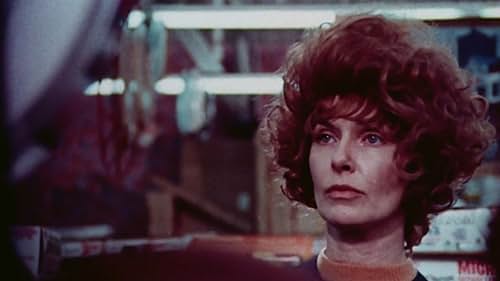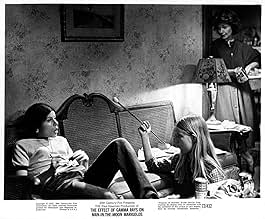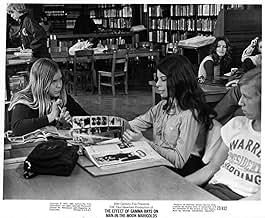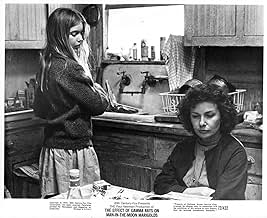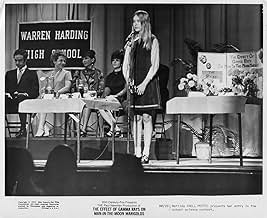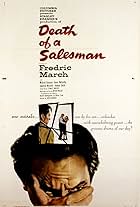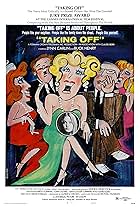IMDb RATING
7.4/10
2.7K
YOUR RATING
Middle-aged misfit Beatrice Hunsdorfer struggles to raise her two daughters, popular epileptic Ruth and promising science student Matilda, in this film version of Paul Zindel's stage play.Middle-aged misfit Beatrice Hunsdorfer struggles to raise her two daughters, popular epileptic Ruth and promising science student Matilda, in this film version of Paul Zindel's stage play.Middle-aged misfit Beatrice Hunsdorfer struggles to raise her two daughters, popular epileptic Ruth and promising science student Matilda, in this film version of Paul Zindel's stage play.
- Awards
- 3 wins & 2 nominations
- Director
- Writers
- All cast & crew
- Production, box office & more at IMDbPro
Storyline
Did you know
- TriviaThe play was originally produced in Houston in 1964. The movie version filmed in 1972, directed by Paul Newman and starred his wife, Joanne Woodward , and his daughter Elinor (Nell Potts). Woodward won the award for Best Actress at the 1973 Cannes Film Festival.
- GoofsWhen Beatrice arrives at her sister-in-law Caroline's house, we see Caroline and her three bridge-playing friends in one shot. Later, when Beatrice yells at her brother-in-law through the bathroom door, we see the three ladies a second time in a reaction shot. Only one of them appears in both shots, although wearing a different outfit each time. The other two card-playing friends were played by different extras in each shot.
- ConnectionsReferenced in The Carol Burnett Show: Family Show without Guests (1973)
Featured review
"This is an adaptation of Paul Zindel's wonderful but tormented play. This play itself is compelling and has a kind of Tennessee Williams flavor; especially "The Glass Menagerie" and "A Streetcar Named Desire". The adaptation is very successful as the production designer (Gene Callahan) manages to transfer the book's psychologically oppressive ambiance to film; "shame hangs in the air of this house" like a cloud of poison gas.
Director Paul Newman gets performances from his cast that pull together parallel stories of how a "strong, strange, and beautiful" flower can unexpectedly spring from an environmental wasteland. His most difficult task is restraining or masking Joanne Woodward's earthy likability so that we waste little sympathy on her character. But using Woodward as the mother allowed him to get a once-in-a-lifetime performance from their daughter (Nell Potts as Matilda-Tillie in the play). Potts abandoned acting after this movie but her ethereal take on Matilda is right on the money and a big reason why the film works so well.
This is really just a story about Matilda's science fair project in which marigold seeds are subjected to varying amounts of gamma ray radiation (the independent variable in her experiment). Those flowers receiving a moderate amount of radiation bloom in amazing and wonderful ways. However, those flowers subjected to additional radiation either have their growth stunted or whither and die.
Meanwhile Tillie and her older sister Ruth are living an analogous story with their mother Beatrice in an extremely emotionally abusive household. In the play it is stated that Beatrice is insane but not how or why she became this way. In the movie the viewer soon reaches this same conclusion. Older daughter Ruth (an amazing performance by Eli Wallach's daughter Roberta) maintains a fairly normal lifestyle at school, she is a majorette and popular but is very selfish and demanding of attention. Notably she is also an epileptic, which is subtly significant because it is analogous to receiving an excessive amount of radiation. Tillie is very different (analogous to receiving a moderate amount of radiation), seemingly shy and withdrawn, she is actually very independent and has found an outlet from the family in her science projects. This outlet serves as a protective niche in which she can bloom.
A truly great scene is Matilda's acceptance speech at the science fair. She explains the results of her project and really lays out the main theme of the story for the viewer. Watch as she mentions how excessive radiation causes dwarf plants, at that point they cut to a closeup of Ruth in the audience. Both the experiment and the family illustrate that while a reasonable degree of adversity can actually be beneficial, too much of the same adversity will poison life.
While this would be a good film if focused solely on Matilda, it is elevated to extraordinary because Newman chooses to also make Ruth a central part of the story. The conventional "movie-way" to tell this story would be to make it an inspirational tale of triumphing over adversity; of free-will overcoming destiny. But fortunately Newman elects to show both sides of the story, in Ruth he shows someone who never has a chance, who cannot recognize her destiny or ever hope to overcome it.
Then again, what do I know? I'm only a child.
Director Paul Newman gets performances from his cast that pull together parallel stories of how a "strong, strange, and beautiful" flower can unexpectedly spring from an environmental wasteland. His most difficult task is restraining or masking Joanne Woodward's earthy likability so that we waste little sympathy on her character. But using Woodward as the mother allowed him to get a once-in-a-lifetime performance from their daughter (Nell Potts as Matilda-Tillie in the play). Potts abandoned acting after this movie but her ethereal take on Matilda is right on the money and a big reason why the film works so well.
This is really just a story about Matilda's science fair project in which marigold seeds are subjected to varying amounts of gamma ray radiation (the independent variable in her experiment). Those flowers receiving a moderate amount of radiation bloom in amazing and wonderful ways. However, those flowers subjected to additional radiation either have their growth stunted or whither and die.
Meanwhile Tillie and her older sister Ruth are living an analogous story with their mother Beatrice in an extremely emotionally abusive household. In the play it is stated that Beatrice is insane but not how or why she became this way. In the movie the viewer soon reaches this same conclusion. Older daughter Ruth (an amazing performance by Eli Wallach's daughter Roberta) maintains a fairly normal lifestyle at school, she is a majorette and popular but is very selfish and demanding of attention. Notably she is also an epileptic, which is subtly significant because it is analogous to receiving an excessive amount of radiation. Tillie is very different (analogous to receiving a moderate amount of radiation), seemingly shy and withdrawn, she is actually very independent and has found an outlet from the family in her science projects. This outlet serves as a protective niche in which she can bloom.
A truly great scene is Matilda's acceptance speech at the science fair. She explains the results of her project and really lays out the main theme of the story for the viewer. Watch as she mentions how excessive radiation causes dwarf plants, at that point they cut to a closeup of Ruth in the audience. Both the experiment and the family illustrate that while a reasonable degree of adversity can actually be beneficial, too much of the same adversity will poison life.
While this would be a good film if focused solely on Matilda, it is elevated to extraordinary because Newman chooses to also make Ruth a central part of the story. The conventional "movie-way" to tell this story would be to make it an inspirational tale of triumphing over adversity; of free-will overcoming destiny. But fortunately Newman elects to show both sides of the story, in Ruth he shows someone who never has a chance, who cannot recognize her destiny or ever hope to overcome it.
Then again, what do I know? I'm only a child.
- aimless-46
- Jan 5, 2005
- Permalink
Details
- Release date
- Country of origin
- Language
- Also known as
- Die Wirkung von Gammastrahlen auf Ringelblumen
- Filming locations
- Production companies
- See more company credits at IMDbPro
Box office
- Gross worldwide
- $84,823
- Runtime1 hour 40 minutes
- Color
- Aspect ratio
- 1.85 : 1
Contribute to this page
Suggest an edit or add missing content

Top Gap
By what name was The Effect of Gamma Rays on Man-in-the-Moon Marigolds (1972) officially released in India in English?
Answer
